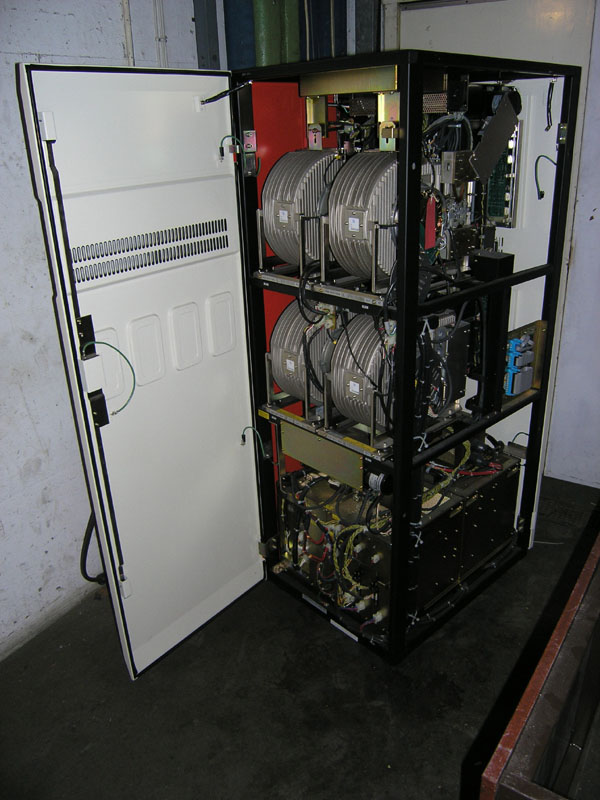
We actually have this artifact in the collection.
| Mus.Cat. NEWUC:2003.49 | Mnfctr: Fujitsu | Date: 1985 | Ser. No: 0203934 | Model: 6280 |
| Comp: Disk Storage | Width: 600 mm | Depth: 825 mm | Height: 1690 mm | Weight: 370Kg |
The Amdahl 6280 disk storage cabinet contained four Fujitsu disk drives,
at the rear was the disk drive logic, and below the power supplies.
These disk drives are not removeable, they are fixed.
Amdahl was competing with IBM for the sale of computers,
(Amdahl's computers were IBM compatible both in processor and disk storage),
and its disk storage took one third of the floor space of the equivalent IBM disk storage,
and it was cheaper, and faster, and just or even more reliable.
Gene Amdahl was one of the architects, if not the most important one, of the IBM 360/370 range of computers
that dominated the World computer market, and because it was dominant unfairly repressed any competition,
so repressing improvements in computing hardware and software from competitors.
The same process took place (and is still taking place, 2005), at the beginning of the 21st century
by Microsoft in the PC market.
Gene Amdahl disagreed with others in IBM about the future development of computer hardware
and so left to setup his own company in competition with IBM.
Amdahl Corp was remarkably successful, despite the fact that many a purchasing director risked their job
by selecting Amdahl rather than IBM.
Unfortunately Amdahl's competition with IBM was overtaken by the arrival of VLSI technology and the
Mini and Personal Computer which saw the demise of mainframe computers in a few years. The applications
on the mainframe were unbundled and distributed to smaller/cheaper servers that connected to the users
via the new Internet who used a PC as an interface.
This is a view of the side of one of the disk drives.
On the left is the windings of the synchronous motor and the magnetic armature.
On the right is exposed parts of the upper and lower voice coils that moved between very strong magnets
to control the movement of the read/write head assembly.
This geometry of one synchronous motor turning the disks so controlling the speed of revolution
and so the data rate, along with a head-arm assembly on a single rotating axis controlled a voice coil
has been the norm from 1985 right up to now (2005) and beyond.
This is called a rotary voice coil actuator.
Back to DASD.